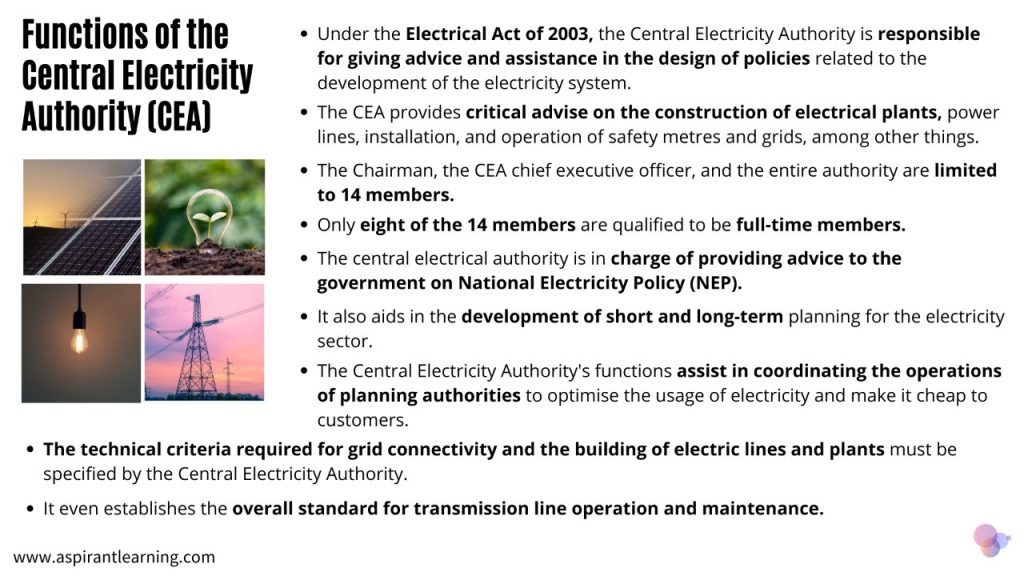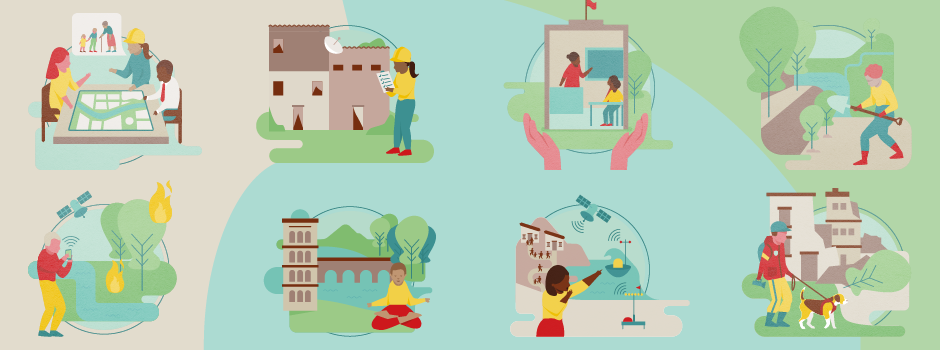News Highlight
The Disaster Management Plan provides a framework and direction to the utilities in the power sector for all phases of the disaster management cycle.
Key Takeaway
- The Central Electricity Authority (CEA) has produced the power sector disaster management plan (DMP) to provide a proactive and integrated strategy for disaster mitigation, readiness, emergency response, and recovery operations.
- The DMP offers utilities in the power sector a framework and direction for all aspects of the disaster management cycle (Mitigation, Preparedness, Response, and Recovery).
- It is meant to provide a basic notion of future emergencies and tasks and assignments before, during, and after emergencies to all agencies within the sector.
Disaster Management Plan
- Highlights
- It offers utilities in the power industry structure and guidance for all aspects of the crisis management cycle.
- It is meant to provide a general understanding of potential emergencies.
- As well as roles and responsibilities to all agencies within the sector before, during, and after an emergency.
- To assess threats to power infrastructure, it is necessary to conduct a fragility and vulnerability study on civil structures such as buildings and foundations in transmission and distribution facilities.
- Objectives
- To determine the quantitative risk associated with power networks.
- To develop effective prevention, mitigation, response, and recovery measures.
- Significance
- Accurately predicting climate risks is challenging.
- Electric utilities can manage risks by analysing several climate scenarios and potential implications on their assets.
- This ensures a consistent power supply and prompt restoration even during extreme weather events and natural disasters.
- This will aid policymakers and decision-makers in evaluating critical infrastructure planning and protection plans and actions.
Risk Reduction
- Briefing
- Disaster risk reduction techniques can save thousands of lives by implementing basic preventive measures.
- The primary drivers of rising disaster casualties are the lack of coordinated disaster reduction measures and a “culture of preventive”.
- Disaster mitigation measures include assessing the likelihood and severity of hazards and analysing the community’s vulnerability.
- The next stage is to strengthen institutional capacity and community preparation.
- Knowledge is essential in disaster reduction.
- Traditional community knowledge must be combined with knowledge gained through research and previous experiences.
Central Electricity Authority (CEA)
- Objective
- The Central Electricity Authority (CEA) is an apex body in India that looks after the development of the power sector in India.
- Year of Establishment
- 1951 – as a part-time body
- 1975 – made full-time body
- Ministry
- Ministry of Power
- Statutory/Constitutional Status
- The Government of India established CEA under Section 3 of the Electricity Supply Act 1948.

Way Forward
- Since social media may be utilised for relief, recovery, and rescue, it has emerged as a crucial tool in disaster management.
Pic Courtesy:
Content Source: The Hindu



